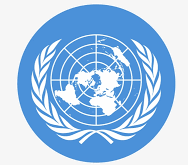By Atoyebi Nike
The United Nations has raised fresh concerns that the world is dramatically falling behind in achieving the Sustainable Development Goals (SDGs) by 2030, warning that urgent and united action is needed to avoid leaving more people behind.
Launching the 2024 Sustainable Development Goals Report on Monday at the opening of the High-Level Political Forum on Sustainable Development (HLPF) in New York, UN Secretary-General António Guterres declared, “We are in a global development emergency.”
The report outlines both encouraging gains and sharp setbacks. While lives have been transformed with child and maternal mortality rates reduced by about 15% since 2015, and over 2 billion malaria cases averted over half of the SDGs are progressing too slowly, and 18% have actually regressed.
“This report is more than a snapshot of today. It’s a compass pointing the way to progress… but only if we act – with urgency, unity, and unwavering resolve,” Guterres stressed.
A Journey of Uneven Progress
Adopted in 2015, the SDGs are a set of 17 goals aimed at ending poverty, ensuring education and health for all, and driving sustainable, climate-friendly development. But nearly a decade on, only 18% of those targets are on track. Another 17% show modest progress, while the rest are either stagnating or reversing.
According to the report, one in 10 people still live in extreme poverty, and one in 11 go hungry, despite gains in disease prevention and access to education. Over 1.1 billion people still live in informal settlements or slums, without access to clean water, sanitation, or healthcare.
“Sustainable development is not a destination but a journey of innovation, adaptation and commitment to human dignity,” said Li Junhua, UN Under Secretary-General for Economic and Social Affairs.
Challenges: Conflict, Climate, and Cash
The UN identified key obstacles holding back progress: growing geopolitical tensions, climate-related disasters, and a staggering $4 trillion funding shortfall for developing nations.
Guterres warned that the goals, while ambitious, lack the enforcement and financing mechanisms needed to succeed. He called for urgent reforms to the global financial architecture and a recommitment to multilateralism.
“No economy can thrive where global development remains underfunded and fractured,” he said.
The ongoing HLPF will convene over ten days to explore how countries can regain momentum. Acknowledging the urgency, ECOSOC Vice President Lok Bahadur Thapa said the moment demands “thinking outside the box” and renewed commitment to shared responsibility.
Better Data, Better Decisions
The report also highlights a key improvement: data availability. In 2015, only a third of the SDG indicators had reliable data. Today, 70% of the goals are well-monitored, and all indicators now have internationally agreed measurement methods.
Still, the UN warned that even this progress is vulnerable to shifting priorities and underinvestment.
“The SDG story is told in numbers,” said Guterres, “but it is, above all, a call to action.”
The Path Forward
Despite grim statistics, the UN insists there is still time but only if world leaders act boldly in the next five years. The Secretary-General urged nations to invest in inclusive, green development, scale up cooperation, and leave no one behind.
“This is not a moment for despair, but for determined action,” said Mr. Li. “We have the knowledge, tools, and partnerships to drive transformation.”
Key Facts from the Report:
- Only 18% of SDG targets are on track
- Over 800 million still live in extreme poverty
- 1.1 billion people live in slums or informal housing
- $4 trillion annual funding shortfall for developing nations
- In 2024, one person died from conflict every 12 minutes
UN NEWS
